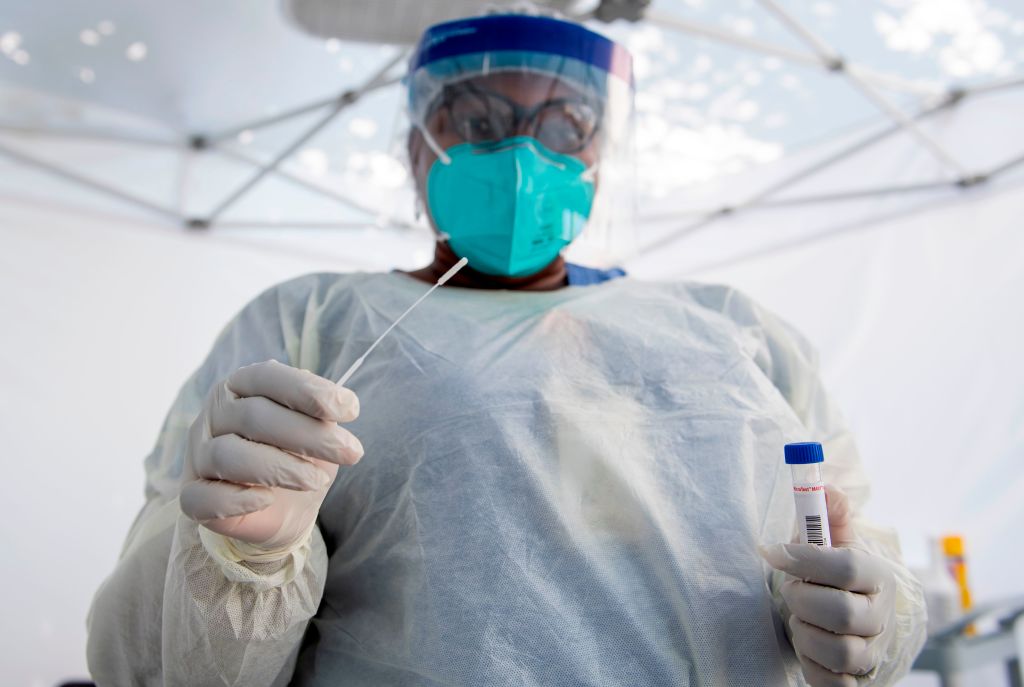You are here
Why Some People Are Waiting Weeks for Their COVID-19 Test Results
Primary tabs
 Why Some People Are Waiting Weeks for Their COVID-19 Test Results Labs and agencies are grappling with supply shortages, logistical challenges, and a lack of federal guidance Time
Why Some People Are Waiting Weeks for Their COVID-19 Test Results Labs and agencies are grappling with supply shortages, logistical challenges, and a lack of federal guidance Time ....As the United States struggles to control the COVID-19 pandemic, people across the country are using Twitter to announce the arrival of their virus test results. The point of these tweets is not just to broadcast the result itself, but to point out the absurdity of receiving a result so stale that it’s almost completely useless from a public health standpoint.
Social media posts from July and August make clear a frustrating reality: some Americans are getting their results in mere hours, while others are waiting days, even weeks. To illustrate the problem, TIME set out to create a map showing average test result wait times across the country. What we found instead was that wait times are not just a product of geography, but also of a messy, disparate system of labs and agencies all grappling with supply shortages, logistical challenges, and a lack of federal guidance. The chaos is all but impossible to neatly map and track—but what we learned along the way sheds light on a fundamentally broken system that’s hampering the country’s ability to effectively respond to the pandemic.
When a person gets tested for COVID-19 in the U.S., it’s not always obvious where their saliva sample or nasal swab will end up. Of the more than 700,000 samples taken daily, about half are routed to hospital labs, university labs and public laboratories. The other half are sent to 12 major commercial laboratories, including Quest Diagnostics, LabCorp and Aegis Sciences Corp, which have numerous facilities around the country that serve specific states or regions.
Early in the pandemic, tests were sent from hospitals to the U.S. Centers for Disease Control and Prevention and other public labs, which serve as the first line of defense when there’s an outbreak. But public labs run small operations and cannot handle the type of mass testing that’s required in this pandemic. As the Federal government pushed for more testing and launched drive-through community-based test sites, commercial labs were in an optimal position to jump in. They already had existing business relationships with pharmacies and other retailers that operate the sites, as well as with the hospitals, doctor’s offices, and clinics that lacked their own labs. More than 30 million COVID-19 samples have passed through commercial labs since the federal government began allowing them to do that work on Feb. 29.
But the system as a whole wasn’t ready for such an unprecedented ramp-up. Addressing the shortages of nasal swabs, reagents, trained lab personnel, and testing machines has been a game of whack-a-mole. If supplies can’t be delivered, a lab that’s already receiving as many tests as it can handle will inevitably fall behind. Labs across the country can’t order supplies fast enough and manufacturers can’t make them fast enough.
“It’s The Hunger Games for laboratories,” says Rachael Liesman, director of clinical microbiology at the University of Kansas Hospital. “If we get our supplies, then we can operate, and if we can’t, it grinds to a halt.”...



Recent Comments